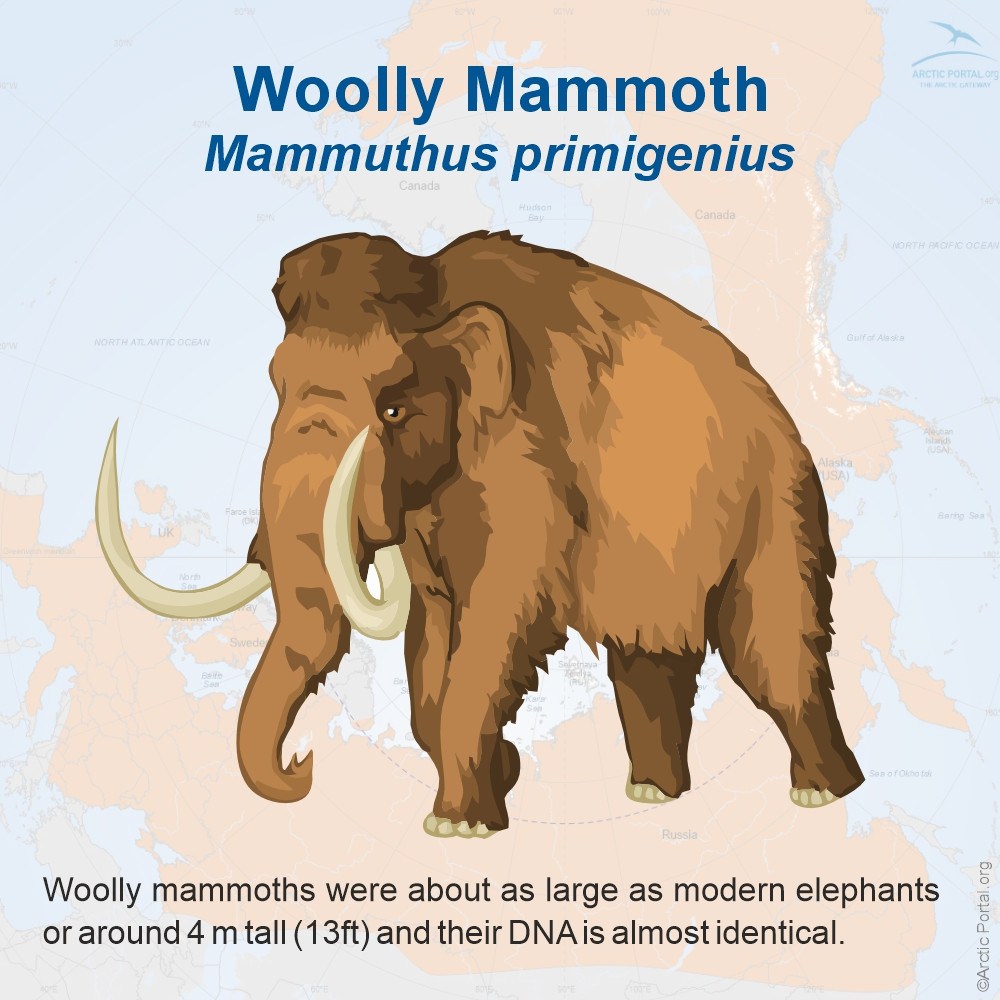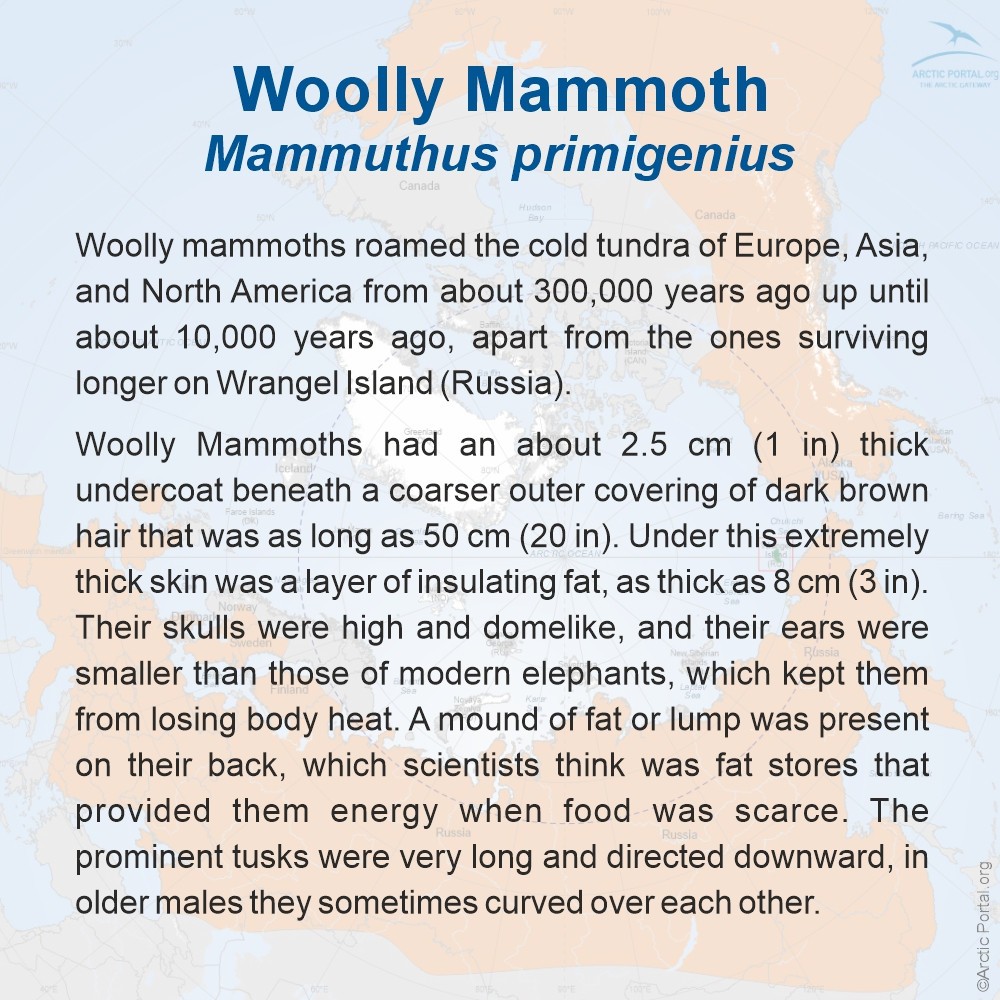Woolly mammoths roamed the cold tundra of Europe, Asia, and North America from about 300,000 years ago up until about 10,000 years ago, apart from the ones surviving longer on Wrangel Island (Russia).
Woolly mammoths roamed the cold tundra of Europe, Asia, and North America from about 300,000 years ago up until about 10,000 years ago, apart from the ones surviving longer on Wrangel Island (Russia).
Woolly Mammoths had an about 2.5 cm (1 in) thick undercoat beneath a coarser outer covering of dark brown hair that was as long as 50 cm (20 in). Under this extremely thick skin was a layer of insulating fat, as thick as 8 cm (3 in). Their skulls were high and domelike, and their ears were smaller than those of modern elephants, which kept them from losing body heat. A mound of fat or lump was present on their back, which scientists think was fat stores that provided them energy when food was scarce. The prominent tusks were very long and directed downward, in older males they sometimes curved over each other.
Mammoths grazed on plants, using their 15-foot long tusks to dig under snow for food, like shrubs and grasses. They are believed to have eaten about 200-300 kg of grass a day, therefore needing to be constantly on the move in search of new pastures.
Like today's elephants, woolly mammoths likely gave birth to one calf at a time. The females and their young roamed in herds of about 15 individuals. Male mammoths would leave the herd at about age 10.
Mammoths could probably live up to the age of 60.
The animals were hunted by humans as a source of valuable food, for their hides and for building material for their huts or shelters.
Climate change or environmental warming, that caused a vegetation change, is thought to be the main reason for the extinction of mammoths.
Extinction on Wrangel Island
The Woolly Mammoth persisted longest on Wrangel Island of the coast of eastern Russia, surviving until approximately 4,000 years ago. The extinction of the final mammoth population on the island revealed a clear indication of a mutational meltdown. Scientists believe that for a population to maintain genetic diversity, a minimum viable population size of at least 500 individuals is necessary, while around a thousand individuals are needed to prevent the accumulation of harmful mutations over time. Wrangel Island itself was only big enough to sustain a couple hundred mammoths.
These mutations likely led to detrimental changes, such as alterations in their fur that made it harder for them to shake off snow, thus making it challenging for them to stay warm. Additionally, these mutations are thought to have negatively impacted male fertility and impaired the mammoths' sense of smell, affecting mating.
View also our map of the Woolly Mammoth's estimated distribution and movement.
Visit our Map Gallery Arctic Portal specializes in creating customized graphical maps that cover a range of significant Arctic topics with global recognition. We are continuously working on new maps and adding them to our Gallery.











